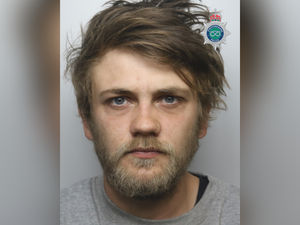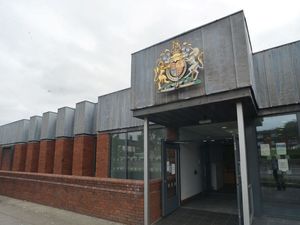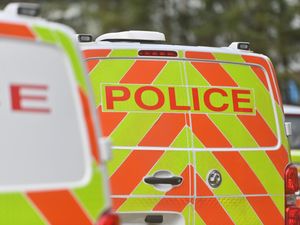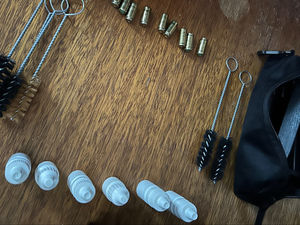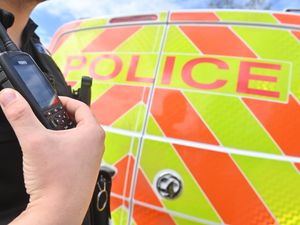The hunt for Britain’s deadliest illegal gun
It has been used in 11 shootings and three murders in the West Midlands – and Britain’s deadliest illegal gun is still on the streets to this day.
The 9mm handgun has been used in a series of violent crimes having been passed around by gang members, with police as yet unable to recover the weapon.
Shells fired from it were found at the scene of the 2009 hold up at the Fairfield post office near Bromsgrove, Worcestershire.
The bloody incident saw Craig Hodson-Walker shot dead by Birmingham gangster Anselm Ribera when he attempted to protect his father, shopkeeper Ken, from armed raiders.
Ken was shot in the leg during the incident, which resulted in Ribera and brothers Declan and Christopher Morrissey, being jailed for a total of 110 years.
The mysterious gun can be seen in CCTV footage but has never been recovered.
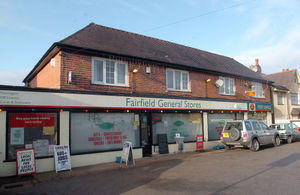
Now the weapon’s movements have been chronicled by filmmakers in the groundbreaking new documentary Gun No. 6.
The 75-minute film, directed by James Newton, uncovers the history of the mysterious gun through dramatic reconstructions using former offenders to piece together the crimes, many of which are linked to notorious feuding Birmingham crime gangs the Johnson Crew and the Burger Bar Boys.
It started in the wake of the Fairfield post office killing, when West Midlands Police identified a series of ten guns that had been used in multiple incidents.
One weapon stood out – a 9mm handgun similar to a CZ 75 pistol.
The firearm had been used more than any of the others, and ballistics experts found that bullet casings recovered the post office floor came from the same gun.
When a bullet is fired, the gun’s hammer leaves unique markings on the casing, which is then ejected from the chamber.
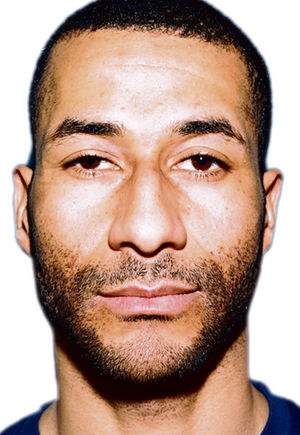
Forensics teams can also look at bullets for ‘rifling’ marks — a pattern caused by imperfections inside the gun barrel, again unique to each weapon.
Police found that the 9mm used to kill Craig Hodson-Walker had first been fired six years earlier in another bloody incident on the streets of Birmingham.
Further investigations linked the gun to a total of 11 crime scenes, including three murders. “There’s a weird anomaly in Britain,” says Zac Beattie, the film’s producer.
“It is one of the safest places for gun crime in the world, but because it’s quite hard to get hold of a reliable gun, when they are used in a serious crime they are not disposed of, but often used again or passed on.”
The gun’s deadly path started on February 23, 2003, when two bullet casings were found after a shooting outside a party at a home in Proctor Street, Duddeston.
Casings from the same gun were then found a month later in George Street West near the Jewellery Quarter, following a shoot-out between rival gangs.
By June of that year police have intelligence suggesting the gun is being shared among members of the Johnson Crew.
In the space of two days, a 24-year-man is shot in the arm, back and neck in a drive-by shooting in Winson Green, and a man is shot in the leg outside a nightclub in Lozells. No arrests were made and neither witnesses or victims speak to the police.
On August 20 casings from the gun were found at the scene of an attempted murder in Winson Green.
Then after nine months of inactivity, Gun No. 6 is used in a gang shoot-out in the city centre. Bullets hit a parked car and a young woman asleep inside the vehicle is fortunate to escape uninjured.
Express & Star comment: Breakdown of law and order in UK
In June 2004 the occupants of a car shoot at parked vehicles in Hockley Brook Close.
Police later find £3,000 of heroin in one of the bullet-riddled cars.
A shot goes through the wall of a house, but its owners refuse to make a police statement.
The gun is used again in a shooting on Thimble Mill Lane, Aston, that October – its eighth recorded use over an 18-month period. Then on November 20, 2004, bouncer Ishfaq Ahmed, 24, is shot dead with Gun No. 6 as he attempts to stop men linked to the Johnson Crew from entering a nightclub.
Six men – William Carter, Michael Christie, Jamal Parchment, Calvin Smith, Carl Spencer and Leonard Wilkins – were each jailed for at least 30 years for murder after the incident, which also saw three other bouncers wounded.
In July 2005 the gun was used in another murder, which saw clubber Andrew Huntley shot twice in the head by Kemar Whittaker, who was jailed for at least 30 years.
It is not seen for three-and-a-half years – until the deadly events at Fairfield post office.
Gun No. 6 is in cinemas on October 12. It airs on BBC Two later this year.

